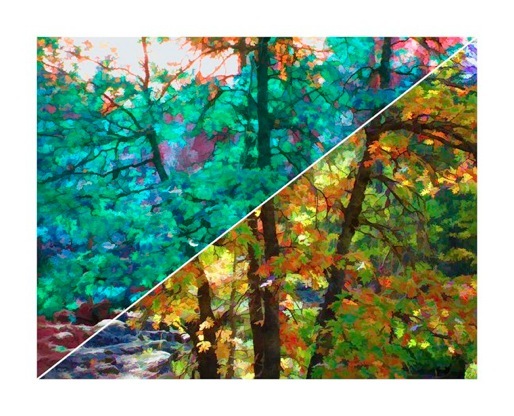Menu
La Vérité
An occasional rant on the often screwy world of “fine” art,
photography, digital graphics, and natural history.
Rant #1
The Value of Artist's Proofs
Artist Proofs are the first experimental prints pulled from a set of silk screens, a lithographic stone, metal or glass plates, wood or lino cut blocks, another piece of paper, or any material where ink is applied to one surface and transfered to another. The first prints in an edition can be flawed when a new “plate” receives too much, or not enough, ink. Uneven pressure can smear the ink in one place or transfer an insufficient amount in another. Successive color “plates” can be out of register resulting in a double image or badly overlapping colors. Inks can smear together, or create a hideous color at the overlap with a previous color. Such prints were once destroyed when the final print run was completed.
Eventually someone realized that these “flawed” prints offered insight into the artists process, elevating these proofs above the final print run. They added an additional layer of uniqueness, and could be sold for a higher price.
Automated printing processes play fast and loose with the concept of artist proofs. Today artwork is mass marketed through offset lithography, which is a fancy name for the same printing process that is used to make postcards, posters, magazines, and calendars.
The first prints from an offset press are checked for flaws, misalignment, or unevenly applied ink. Color can be corrected by adjusting the amount of cyan, magenta, yellow, or black ink applied to each plate. In offset lithography these experimental sheets are deemed of no value and end up in the recycle bin. Convention allows for an additional five to ten percent of the final print run to be set aside as artist proofs and usually sold at a premium. These “proofs” are identical to all the others in the edition. There are no differences in color choice, touch-ups, changes or corrections to the plate, or clues into the artists process. There is no reason for these prints to be sold at a higher price.
There is one exception, a remark. Remarks are small drawings (usually pencil or ink) added by the artist at the time they sign the print. The most common position for the remark is at the bottom center just beneath the image. Remarks add true value to mass marketed prints and are worth a premium price.
Mass produced prints are sometimes sold at a discount if they lack the artists hand written signature. This may seem like a deal, but prints that lack a signature are not as valuable (although value should not be your primary reason for buying artwork.) The same is true of “limited editions” that number in the hundreds or even thousands - even when the original artwork is from a well known artist. The original signature is printed with the artwork, so be sure an actual handwritten signature is also on the print, or that you receive a hand signed Certificate of Authenticity.
The most common position for an artist signature is on the border just below the artworks lower right edge. The artwork title is in line with and opposite the signature in the lower left corner. The individual print number and total quantity of prints in the edition are centered between the title and signature (i.e. 23/50 means the twenty-third print in a total edition of 50 prints.)
Summary: Artist proofs of offset litho prints may command a premium price, but offer dubious value to the buyer. Always check for a handwritten signature, and/or remark on the bottom border of the print, or a Certificate of Authenticity. These additions by the artist add real value and could be the difference between appreciation and depreciation.
Here are a few guidelines when purchasing artwork:
Never purchase art solely as an investment, unless you can afford to buy a Picasso or Monet (in which case - call me.)
Always buy what you love.
Purchase an image that catches your eye, that draws you in, and offers something new every time you look at it.
Buy art that you just can’t be without and you will never be disappointed - no matter the resale value.
Additional Note: A digital artist's choices are potentially unlimited. A single image can have many variations. Each variation could be considered an artist proof of the final print run (the total number of prints in an edition.) Historically 5% to 10% of the print run can be labelled AP. I have chosen to count only two such test prints as artist proofs. Where there is no significant difference from the final run, then other criteria apply - damage to the print, different crop, or color palette. I sell no proofs of my artwork, when no such variations exist.
BW
All my images are copyright protected and registered with the U.S. Copyright Office. There are no public domain images on this site. Please contact me if you wish to use any of my photos. Unauthorized use will be tracked, and may result in prosecution. Thanks for your understanding. BW



